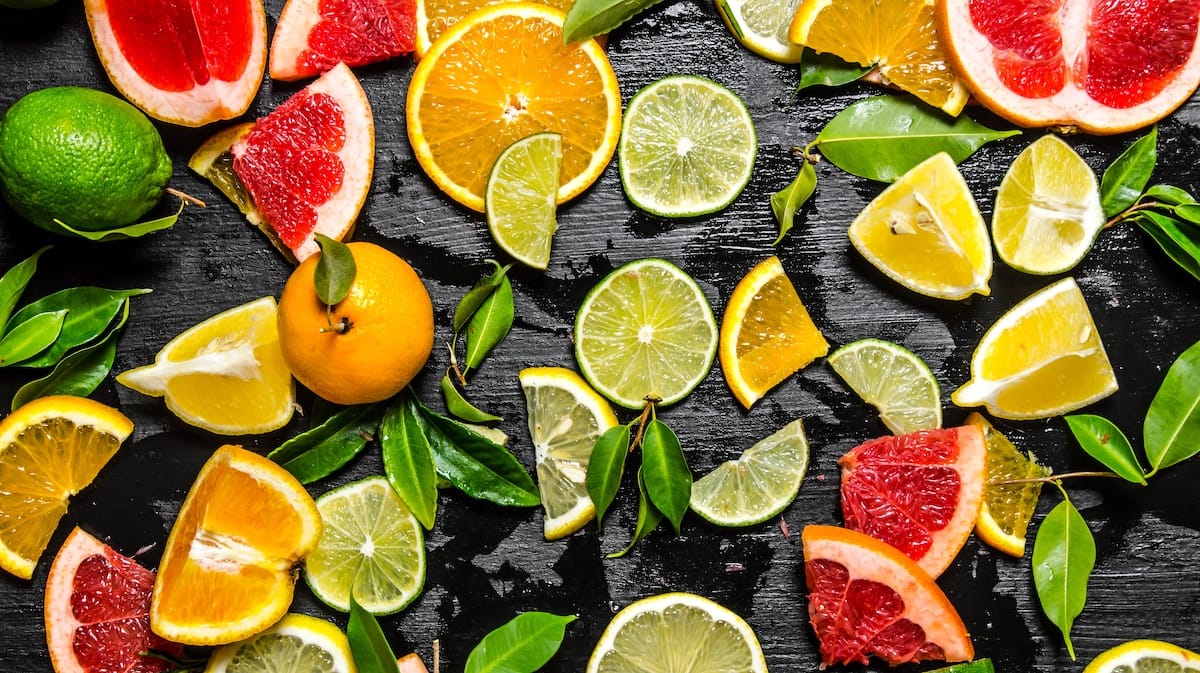How to Store Lemons, Limes, and Other Citrus for Lasting Flavor

How to Store Lemons, Limes: We live in a time of citrus abundance, but it wasn’t always so. For most of Western history, lemons, limes, and oranges were rare luxury fruits, prized by those who could afford them. The first lemons popped up in Rome around the time of Christ—prior to that, Romans only had knobby etrog citrons at their disposal.
Sour oranges and limes arrived in Europe in the 10th century, while sweet oranges didn’t make their way from Asia until the Renaissance. Fast-forward to today, and citrus fruits are so cheap and plentiful that we’ve practically forgotten how to care for them.
Taxonomically speaking, lemons, limes, grapefruits, and oranges are all hybrids—some are even hybrids of hybrids—descending from a handful of “core” species that include pomelos, citrons, and mandarin oranges. True lemons are a cross between a citron and a bitter orange; grapefruit is the love child of a pomelo and a sweet orange (which itself is a love child of a mandarin and a pomelo).
How to Store Lemons, Limes, The citrus family tree is expansive, and it includes dozens of cultivars fit for human consumption. Ruby red grapefruits, Meyer lemons, finger limes, Buddha’s hand citrons, and even the rare bizarria—an uncanny graft chimera of a Florentine citron and sour orange that looks like it escaped the pages of Annihilation—all share the same phylogenetic root.

With as many citrus cultivars as there are, it’s difficult to give blanket advice on how to optimally store all of them. Myriad factors influence a given fruit’s lifespan, including where it was produced, the time of year it was harvested, how ripe it was at harvest, and how it was handled or stored before arriving at your kitchen countertop. But we can certainly keep some best practices in mind for the most common supermarket varieties.
Also Read: The Worst Fruits For People With Diabetes And The Best
Should I store whole citrus in the fridge or on the counter?
How to Store Lemons, Limes, As with just about any fruit, freshness is key for lemons, limes, oranges, and grapefruits. Cold temperatures delay spoilage for a time—but that doesn’t mean the fridge is necessarily the best place for your citrus.
According to UC Davis’s Postharvest Technology Center, lemons, limes, oranges, and grapefruits can (and should, for best quality) be kept at room temperature if you plan to eat them within a week of purchase. Keep your fruits in an unlidded container with some airflow vents (such as a colander or fruit basket) away from direct sunlight.
Citrus fruits are non-climacteric—that is, they don’t continue to ripen once they’ve been harvested. Many citrus fruits are harvested while they’re still green on the outside, even though they’re perfectly ripe within. Because consumers associate green peels with underripe fruit, citrus growers expose their fruit to ethylene gas post-harvest in a process called degreening, which ensures a uniform color in the peel but doesn’t affect the fruit within. All of that is to say that storing citrus fruits next to ethylene producers like bananas won’t alter their flavor or hasten their demise on the countertop.

How to Store Lemons, Limes, If you plan to keep citrus for longer than a week, stash it in the fridge to prevent bacterial fermentation and molds like penicillium from taking root. UC Davis recommends keeping uncut fruits in perforated plastic bags in the produce drawer for optimum shelf life.
In the fridge, citrus can last for many weeks depending on the cultivar; common lemons can stay fresh for two months or longer, depending on the factors listed above. But it’s important to remember that refrigerator temperatures in the high 30s and low 40s can also cause chilling injury—much like what happens to eggplants in the fridge—that can then lead to rot.
How to Store Lemons, Limes, UC Davis notes that some Florida oranges are best stored between 32 and 34 degrees Fahrenheit, while Arizona-grown Valencia oranges prefer a much balmier 48 degrees. (Maddening!) If you have the good fortune to buy locally grown citrus, ask the producer whether to keep it in the fridge or at ambient temperatures.
What happens to citrus when you cut it open?
Citrus juice is highly perishable, and the bottled stuff you buy in the supermarket has gone through many high-tech interventions to prolong its shelf life. In fact, frozen orange juice concentrate was developed for the US military to provide its soldiers with vitamin C during World War II because regular frozen OJ would always spoil due to oxidation before it arrived on the front lines.

How to Store Lemons, Limes, For the non-concentrated stuff, a host of factors influence its flavor, including the cultivars used, how the juice was pressed (hand-squeezed really does taste different!), and how it was heat-treated for pasteurization and stabilization.
When you cut open nature’s protective packaging, a.k.a. the citrus peel, with a knife or peeler, the fruit immediately begins to degrade in flavor and texture. Volatile aroma compounds begin to waft away, while oxidation and microbial contamination (more on that below) both go to work, bringing vinegar and buttermilk-like flavors to the party. Even light alters orange juice’s flavor, adding “an oxidized or cooked off-flavor,” according to one study.
How to Store Lemons, Limes, For all of these reasons, it’s best to use citrus as soon as possible after you cut it or juice it, which saves fridge space and avoids unnecessary food waste. In the refrigerator, freshly squeezed orange juice usually lasts two to three days, but it’ll never taste as good as the day you juiced it. (Fresh fruit and juice rarely tastes better with age, with the possible exception of lightly aged lime juice—around four hours from juicing, according to some venerable food and cocktail nerds.)
Beyond a few days, you’re also risking an overgrowth of potentially harmful bacteria that are commonly found on citrus, such as listeria and salmonella. While you could freeze fresh citrus juice, the same considerations apply: a reduction in flavor, oxidation, and the potential for foodborne illness if the juice wasn’t pasteurized.

How should I store cut or zested citrus?
Let’s say you’re making a recipe that calls for half a lemon. What do you do with the other half?
How to Store Lemons, Limes, Cut citrus should always be refrigerated to prevent microbial overgrowth that could make you sick. One study that investigated the risk of foodborne illness from lemon and lime wedges commonly served with beverages at restaurants found that salmonella can survive on the flavedo (i.e., the zesty part of the peel) of lemons and limes for 24 hours at room temperature. Conversely, storing the wedges on ice or in the fridge decreased bacterial growth.
In the fridge, however, cut citrus is still prone to drying out. You could wrap individual quarters or eighths of a lemon in plastic wrap to prolong their lifespan, but that’s a lot of disposable plastic to preserve such a small portion of fruit.
Beeswax wrap is another option, but despite marketing claims and some encouraging research about the antibacterial nature of bee propolis, there’s no conclusive evidence that beeswax wrap is any better at preventing contamination in foods than plastic wrap. (In fact, because it doesn’t seal as tightly as plastic wrap, one study has suggested that beeswax wrap is actually worse at protecting food from deterioration.)
How to Store Lemons, Limes, If you’d rather avoid single-use plastic or questionable feel-good alternatives, a plain old deli container is your best option for storing cut citrus. A study from 2006 tested the shelf life of lemons that had been cut in both slices and wedges, kept in rigid plastic containers, and chilled at varying temperatures. (They were initially well-rinsed in chlorinated water to reduce the possibility of bacterial contamination.)

The researchers concluded that by keeping them in a closed, high-humidity environment at refrigerator temperatures, the lemon slices remained in “marketable quality” for up to 7 days—but they still exhibited some dehydration and a decrease in phenolic compounds, which are potentially beneficial for human health.
How to Store Lemons, Limes, So, unless you’re prepping for a crab festival, you’re better off cutting up lemons the day you plan to use them. The same goes for all juiceable citrus: If you’ve got any leftovers, squeeze them and stir the juice into a glass of water or mug of tea—or get creative and add it to muffin batter, a quick mojo criollo, or an impromptu mai tai. As with any fresh fruit, always buy only what you need and use it up promptly to enjoy the best it has to offer.
Also Read:
Health Benefits Of Fish: 20 Reasons You Should Be Eating More Fish
Best Herbs For Weight Loss: 10 Herbs to Stimulate Weight Loss Process




